Archive for the ‘Cubism’ Category
Monday, October 11th, 2021
“We think of the things we own and use as defining us in some way, but that can only be true if we first describe the things. Describing is a remarkable human act. It connects our inner and outer experience: as we observe and record the material world, we respond and reflect. We enter the realm where the material world meets the imagination. That’s the fertile ground of art.”
– Sheldon Tapley
I created this artwork for The Object Seen: Contemporary Still Life, current exhibition at Art Center of the Bluegrass in Danville. The juror was Sheldon Tapley, masterful painter, draftsman, and Stodghill Professor of Art at Centre College. I received a 2nd-place ribbon and cash prize. 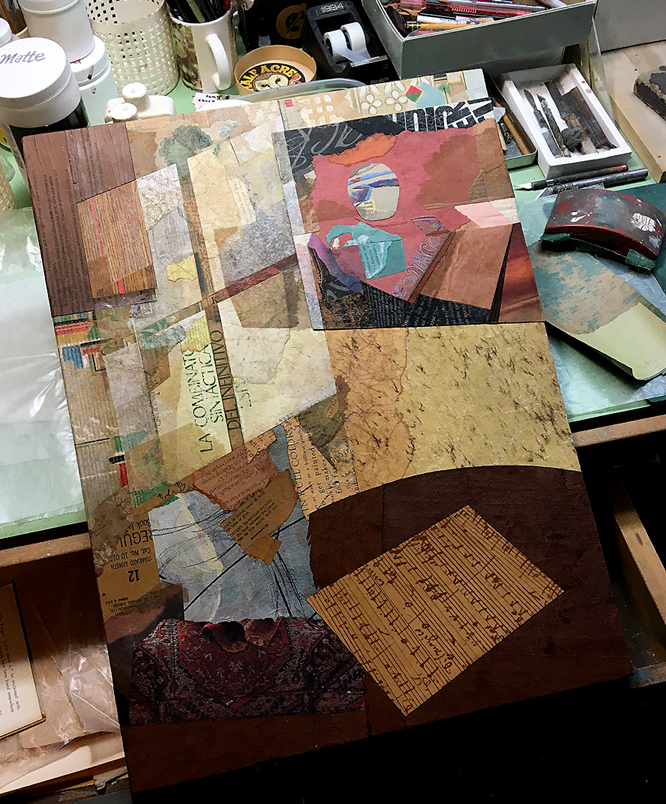 The honor came as a surprise, since I don’t consider myself a practitioner or student of still life as an art form. I have, however, looked deeply at artwork made by Sheldon and those who are. The arms-length quality of modern still life has compelled my close scrutiny for many years. Given that influence, I brought to the genre what I’ve discovered by “painting in papers” from direct observation (the long sweep of art history hovering somewhere outside my conscious awareness, with its rich tradition of artists tackling visual cornacopias of objects and edible fare). I decided to interpret a tabletop group of objects from raw material, rather than assemble a conventional collage composition from found images.
The honor came as a surprise, since I don’t consider myself a practitioner or student of still life as an art form. I have, however, looked deeply at artwork made by Sheldon and those who are. The arms-length quality of modern still life has compelled my close scrutiny for many years. Given that influence, I brought to the genre what I’ve discovered by “painting in papers” from direct observation (the long sweep of art history hovering somewhere outside my conscious awareness, with its rich tradition of artists tackling visual cornacopias of objects and edible fare). I decided to interpret a tabletop group of objects from raw material, rather than assemble a conventional collage composition from found images.
Please view a video clip of the juror’s remarks about my artwork.
The peony tulip blossoms were created en plein air in a local flower garden. The small “still life within a still life” was commenced and partially finished from a setup of actual objects. I relied on photo reference for the rest. Ingredients include colored paper (printed and unprinted), wallpaper, ruined book parts, tissue, reclaimed tea bags, string, and a dried leaf, plus minimal use of walnut juice, burnt coffee, tinted paste, and marker-ink edging. Adhesives include wheat paste, acrylic matte medium, and white glue.
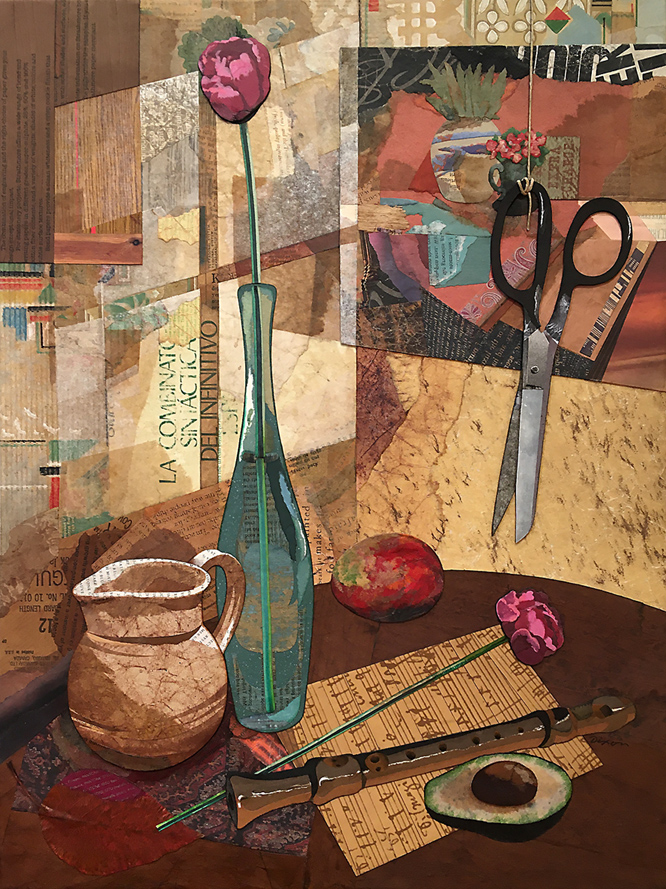
Still Life with Peony Tulips
collage on salvaged canvas
18 x 23.75 inches
• Second Place Prize
Posted in 1) Available!, Collage, Cubism, En Plein Air, Exhibitions, Honors, Ingredients, J A Dixon, Larger Works, Methodology, S Tapley, Still Life, Technique | No Comments »
Tuesday, August 6th, 2019
“Anger is a very limiting emotion. There’s not much you can do with it. There’s no hope in it.”
— Wendell Berry
There was a time when the arts may have held the capacity to alter the world around us. From time to time, music probably has. Perhaps the dramatic arts, too. The oral and written arts of language certainly have, and they remain highly consequential, but the notion that those engaged in artistic “visual statements” can affect society is an illusion. The early 20th-century avant-garde believed they could, and maybe they did to some limited extent, while the attention of a less distracted elite was seized. At any rate, this innovative class took what they had absorbed, rejected much of it, and cultivated the vocabulary of the modern art forms which influence the bulk of what artists do today. And almost all of what we do now has very little if any catalytic effect on evolving civilization — especially if it was overtly intended to do just that. But make no mistake about it, “message art” has been, is, and can be a significant catharsis for creative individuals. Rest assured that it will reinforce solidarity among people of like mind. It can also be relied upon to irritate many of the others.
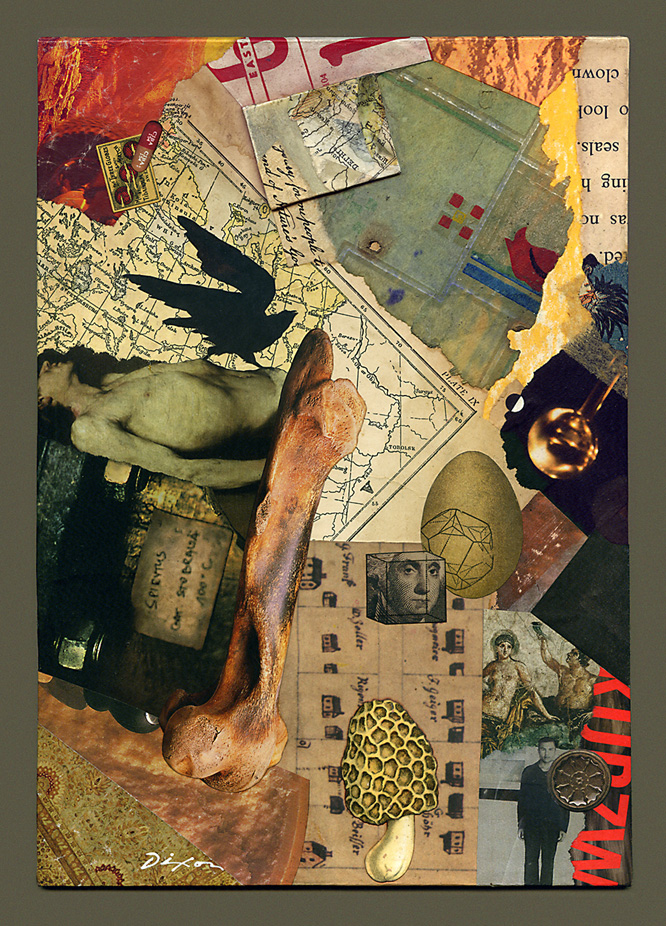
Taboo Faction
collage catharsis by J A Dixon
8.125 x 11.5 inches
Purchase this artwork.
Posted in 1) Available!, Catharsis, Constructivism, Criticism, Cubism, Dada, Influences, J A Dixon, Merz, Music, Surrealism, W Berry | No Comments »
Tuesday, August 21st, 2018
“We do not analyze works of art because we want to imitate them or because we distrust them.”
— Paul Klee
The other day the world learned about an unpublished Ernest Hemingway short story. If there had not been a Mark Twain first, would literature know Hemingway’s writings at all? Could there have been an Isaac Asimov, Stan Lee, or Gene Wolfe without a Verne or Burroughs? The J.K. Rowling body of work without an Austen or Tolkien? 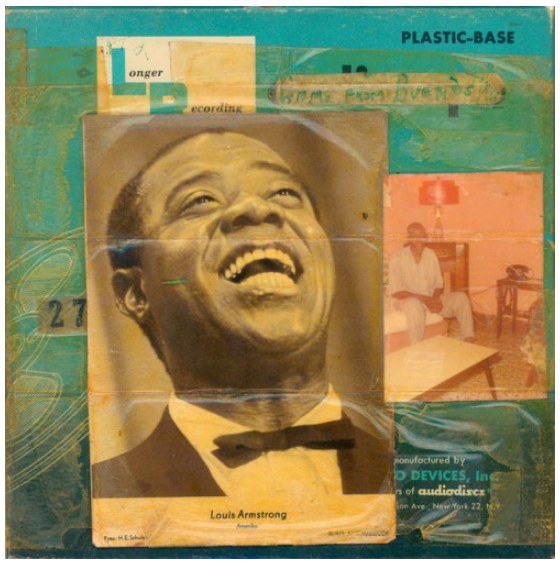 Similarly, all of today’s rock music can be linked to direct influences — to bands such as Ramones, Led Zeppelin or the Beatles, which, of course, had their own precursors. Would jazz exist in its current form without the innovations of Armstrong and all those who inspired him? Imagine a contemporary musician saying, “I really haven’t paid attention to any music that was recorded before I started to play.” And yet, not infrequently, collage artists will boast that they have little use for art history (all the breakthroughs of bygone creators who dug the swimming pools in which they now frolic).
Similarly, all of today’s rock music can be linked to direct influences — to bands such as Ramones, Led Zeppelin or the Beatles, which, of course, had their own precursors. Would jazz exist in its current form without the innovations of Armstrong and all those who inspired him? Imagine a contemporary musician saying, “I really haven’t paid attention to any music that was recorded before I started to play.” And yet, not infrequently, collage artists will boast that they have little use for art history (all the breakthroughs of bygone creators who dug the swimming pools in which they now frolic).
It is argued that modern artists were the first to decide that visual art would be about art, rather than subject matter. Nonsense. Art has always been about art, because it always has been structured on prior foundations. The idea that any artist can burst on the scene as an original is absurd. Nobody who comes out of early childhood with any level of awareness has not built an inventory of perceptions — countless images from the culture around them. Each of these individual influences involved creative activity based on another bank of stimuli, and so forth, back to the first proto-human who picked up a piece of charcoal to make interesting marks on a stone (and was probably knocked on the head by another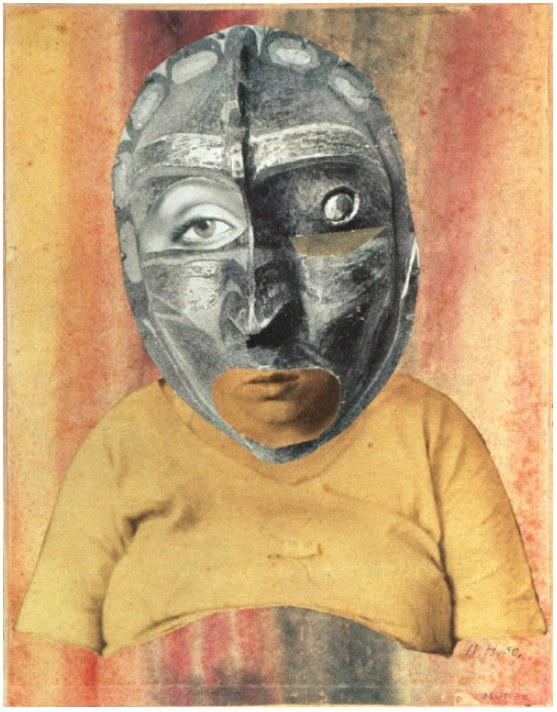
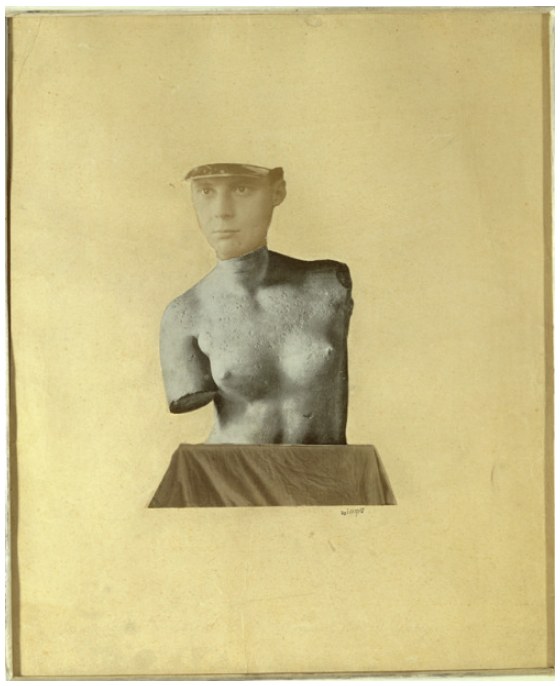 who judged the action as irrelevant to group survival).
who judged the action as irrelevant to group survival).
Perhaps I have belabored my point. Perhaps it is a point that anyone who reads this would not need emphasized in the first place. Isn’t it obvious to us that no art form is more about all these churning influences from untold visual decision makers — painters, printers, illustrators, photographers, designers — than the medium of collage itself? So, let us all continue to study the collage artworks of the explorers who came before us, to trace the direct lineage of their concepts and techniques, to recognize that valuable inheritance in the work of our peers, as well as in the composition taking shape on the surface before us, and then, fully informed, to push confidently into the second century of collage.
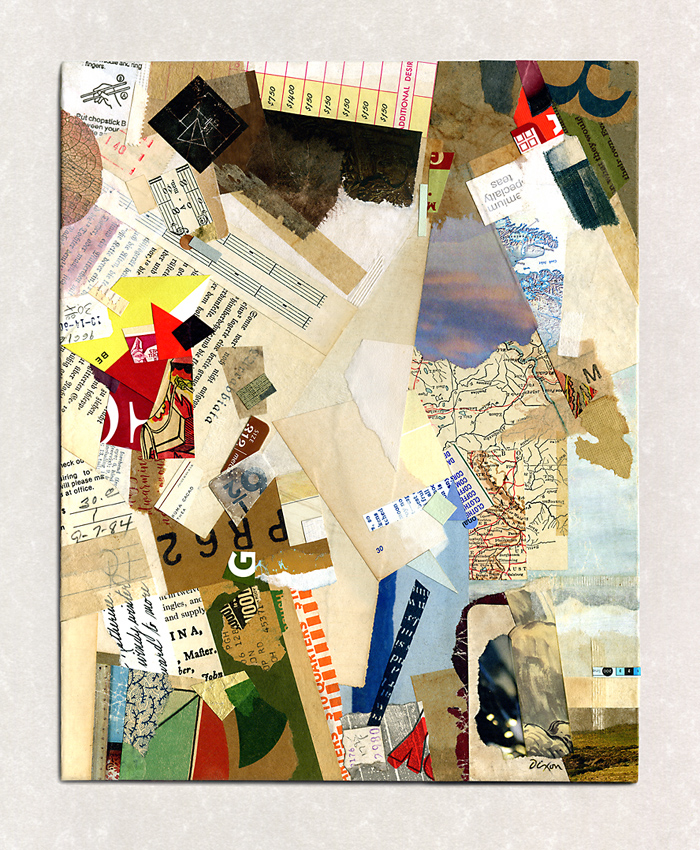
Tranquil Ode (to Merz)
collage homage by J A Dixon
9.5 x 11.875 inches
Purchase this artwork.
Posted in Abstraction, Applied Arts, Collage, Criticism, Cubism, Dada, Fluxus, Graphic Design, H Höch, Homage, Illustration, Influences, J A Dixon, J T Baargeld, K Schwitters, Literature, M Twain, Merz, Music, P Klee, Priorities, Surrealism | No Comments »
Saturday, March 10th, 2018
“In the ’20s, dadaist Kurt Schwitters collected bits of detritus such as cigar bands and bus tickets and used them in collages. They were shocking then but with the passage of time have taken on the aura of classics: vibrantly colored and harmonious arrangements of abstract forms and only incidentally assemblages of junk.”
— John Ashbery
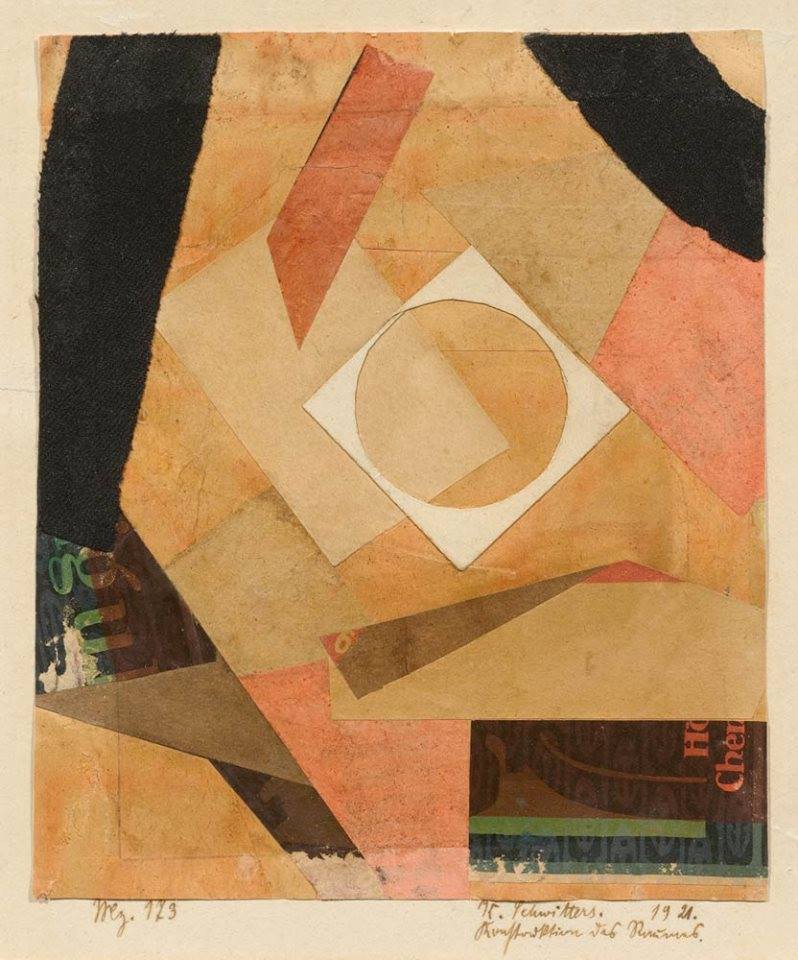
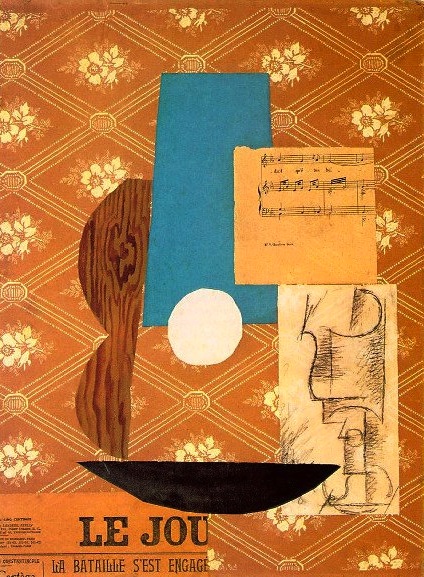 About a hundred years ago, a handful of Europeans had set out to invent what we now know as the medium of collage. Nearly all of them were painters. From the beginning, collage was rooted in modern art concepts that were emerging at the same time — the fundamentals of abstraction. Thus, the evolution of abstraction and collage in the 20th century are entwined, and remain so in a burst of contemporary activity in this post-centennial period. Next year will mark a full century of Merz. Artists working in collage abstraction carry the “creative code” of Kurt Schwitters and his seminal innovations.
About a hundred years ago, a handful of Europeans had set out to invent what we now know as the medium of collage. Nearly all of them were painters. From the beginning, collage was rooted in modern art concepts that were emerging at the same time — the fundamentals of abstraction. Thus, the evolution of abstraction and collage in the 20th century are entwined, and remain so in a burst of contemporary activity in this post-centennial period. Next year will mark a full century of Merz. Artists working in collage abstraction carry the “creative code” of Kurt Schwitters and his seminal innovations. 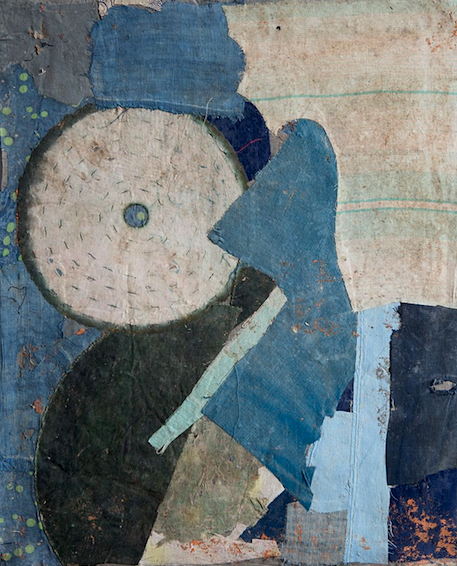 But, allow me to pause here and point out something that has become increasingly obvious: conventional art history was woefully male centered. Intentionally or not, the discipline would downplay or ignore many exceptional women artists, and that includes collage antecedents which were largely the domain of females, especially in the domestic or folk arts. For example, an interesting feature at moowon.com highlights the forgotten art of Chinese textile collage.
But, allow me to pause here and point out something that has become increasingly obvious: conventional art history was woefully male centered. Intentionally or not, the discipline would downplay or ignore many exceptional women artists, and that includes collage antecedents which were largely the domain of females, especially in the domestic or folk arts. For example, an interesting feature at moowon.com highlights the forgotten art of Chinese textile collage. 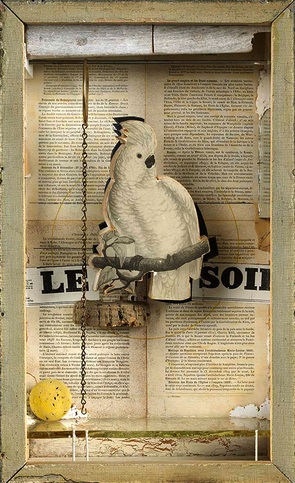 Picasso lifted visual ideas from tribal cultures. Cornell borrowed techniques tied directly to Victorian crafts. We understand that now. Modern art did not spring fully formed from the brow of Zeus like the armored goddess Athena. Fast forward to 2018. Many of the most accomplished and widely recognized collage artists of today are women. And the best part is that we know about them.
Picasso lifted visual ideas from tribal cultures. Cornell borrowed techniques tied directly to Victorian crafts. We understand that now. Modern art did not spring fully formed from the brow of Zeus like the armored goddess Athena. Fast forward to 2018. Many of the most accomplished and widely recognized collage artists of today are women. And the best part is that we know about them.
Melinda Tidwell is one of the dedicated abstractionists in collage that I enjoy following. She has a solid and very articulate designer “upstairs” guiding each decision, but her regard for the unexpected is a strong part of her intuition. Last summer, she published a two-part discussion of “order versus disorder” at her blogsite. It features abstractions by Lance Letscher and is well worth checking out.
Please indulge me as I share examples of collage abstraction from artists who continue to favorably capture my eye. Some of them range into mixed media in a way that remains very much collage. Others are strictly “painting with paper.”
Merz is alive and well in the 21st century, my friends.
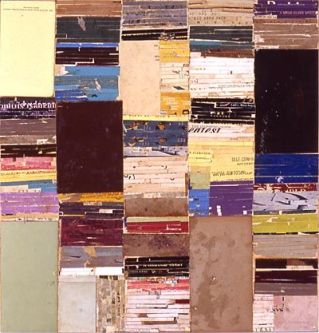
(title unknown)
abstract collage by L Letscher
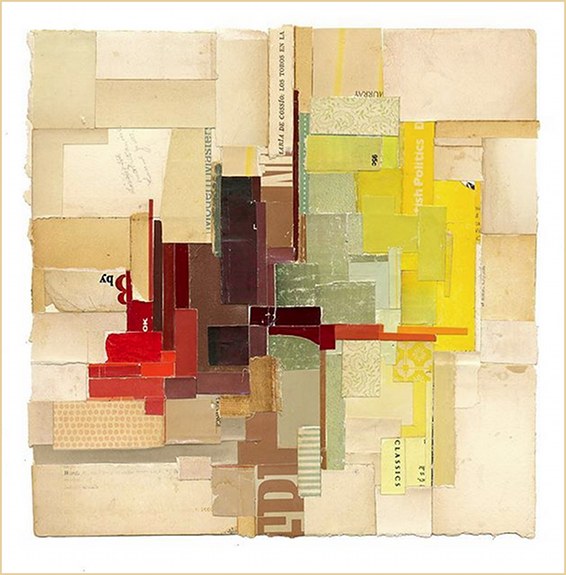
(title unknown)
abstract collage by M Tidwell
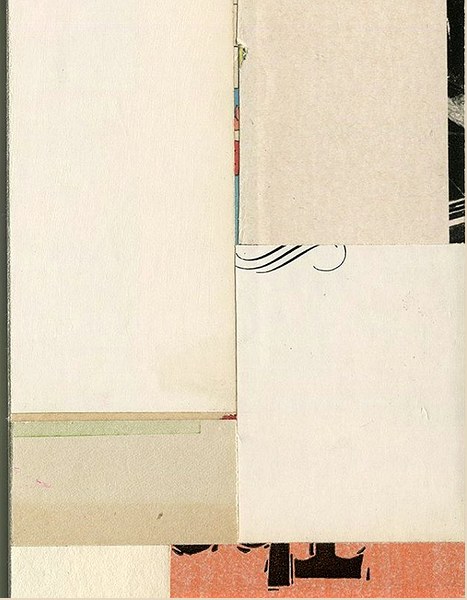
11zc18
abstract collage by Z Collins
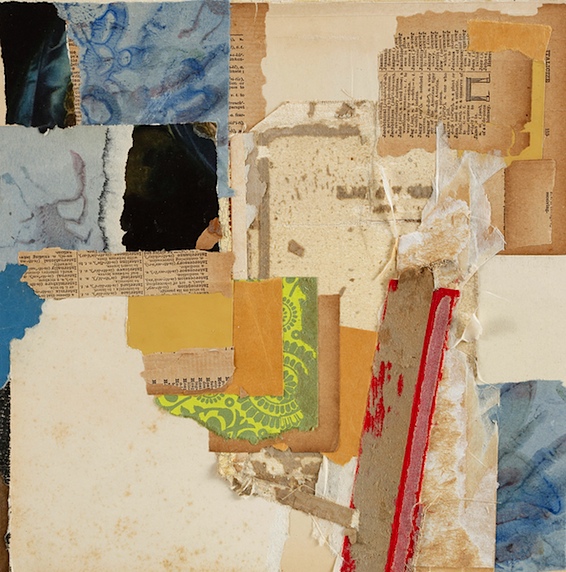
Elysburg IV
abstract collage by C Chapman
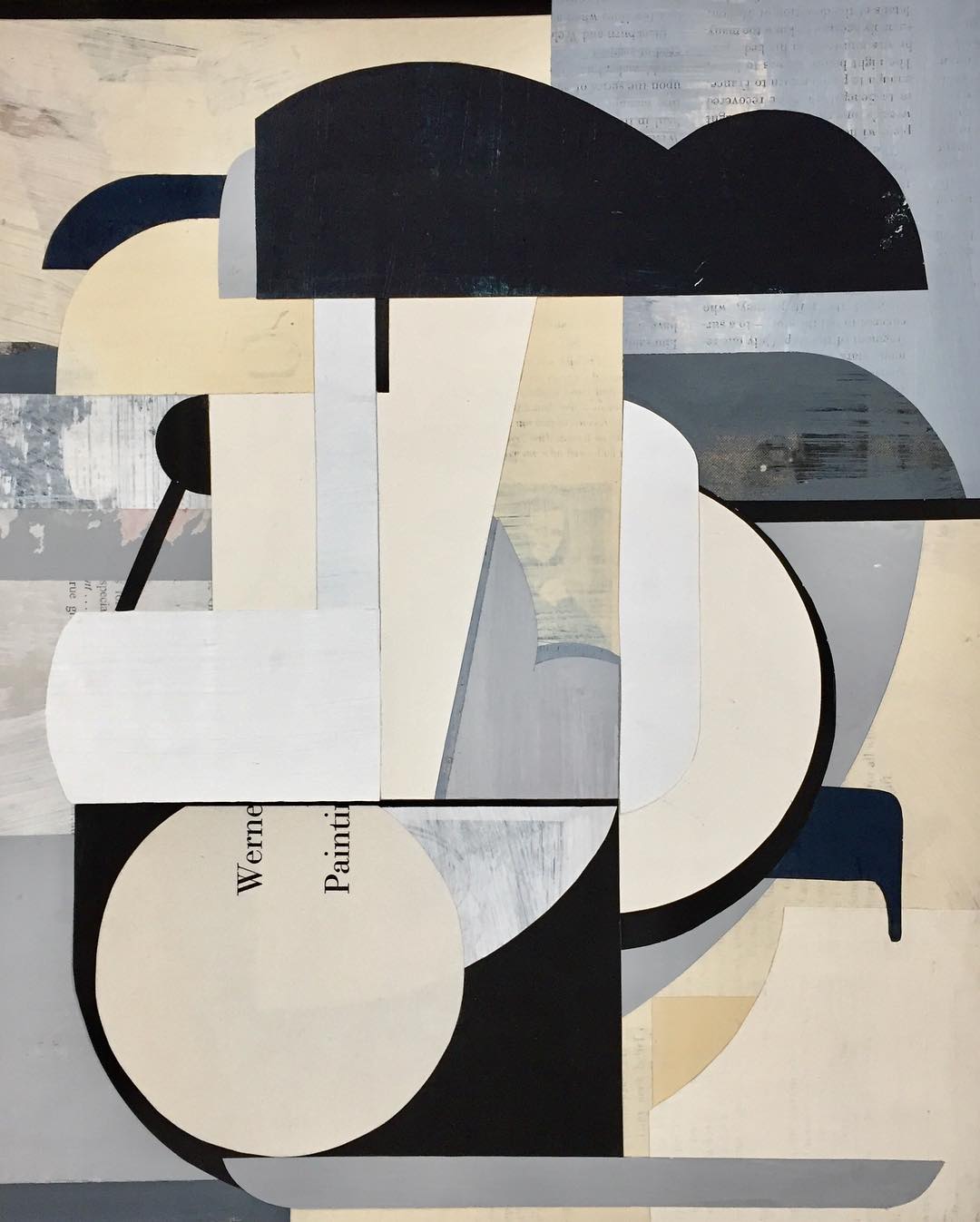
Ellington
abstract collage by D McKenna
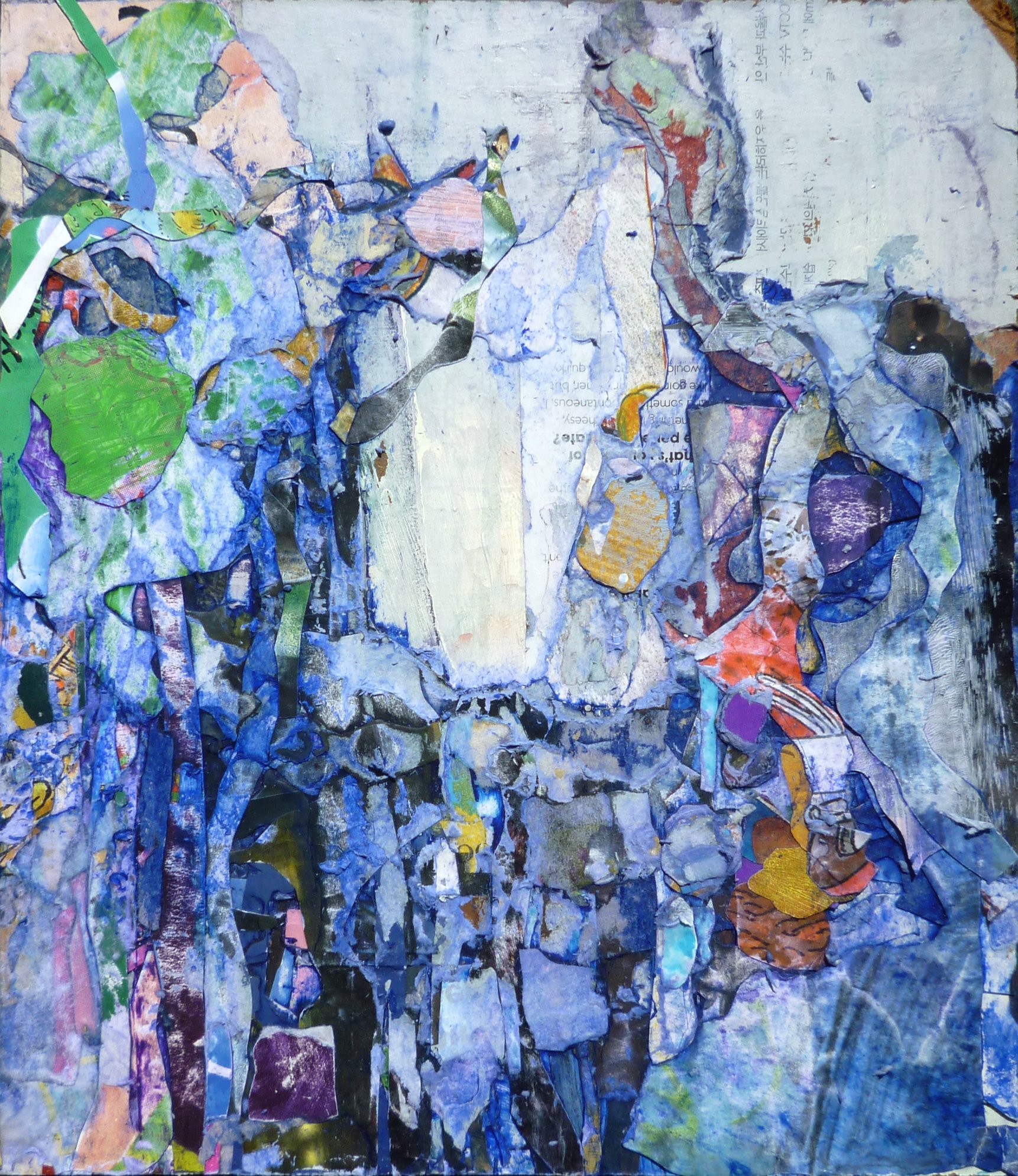
Osmosis 3
abstract collage by C Emeleus
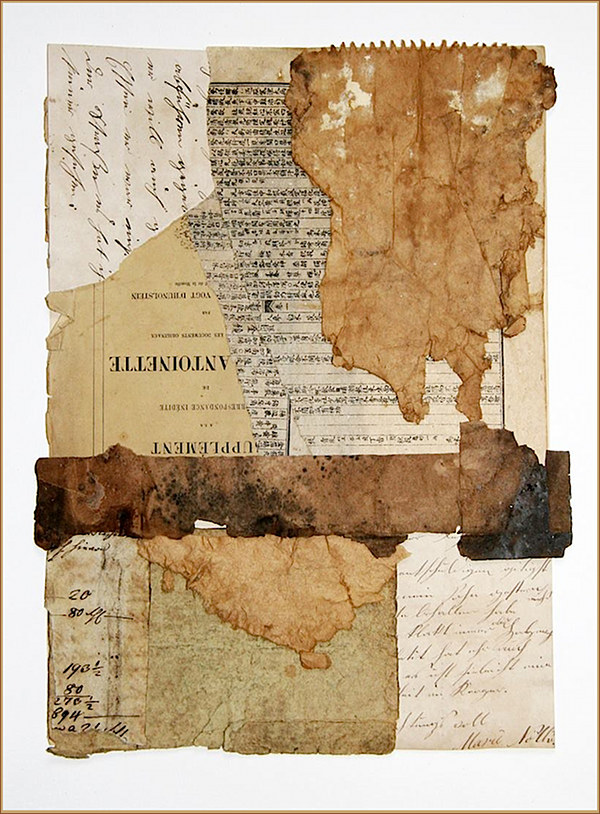
Antoinette
abstract collage by W Strempler
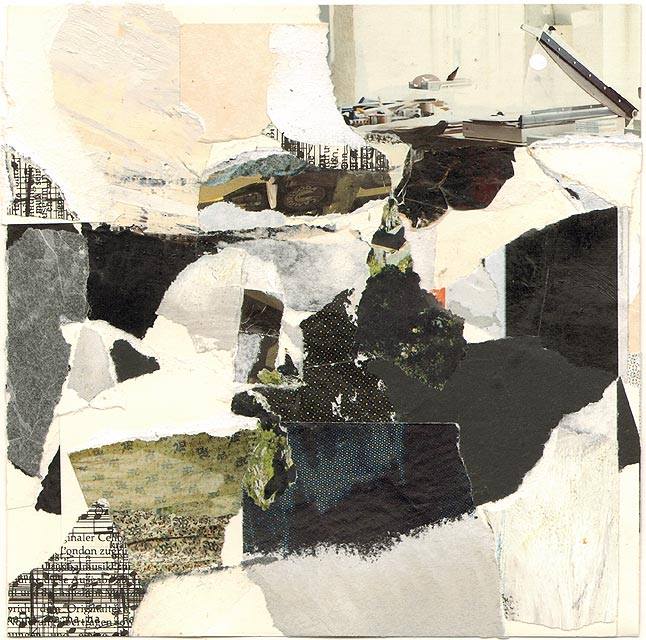
Music
abstract collage by S Kraft
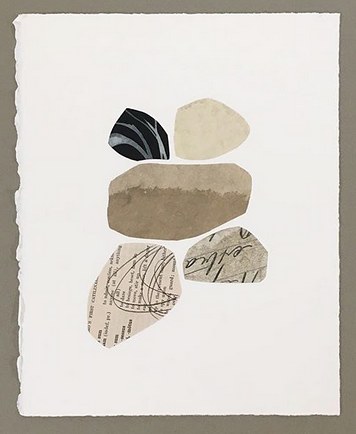
from her series, BALANCE
abstract collage by S A Herman
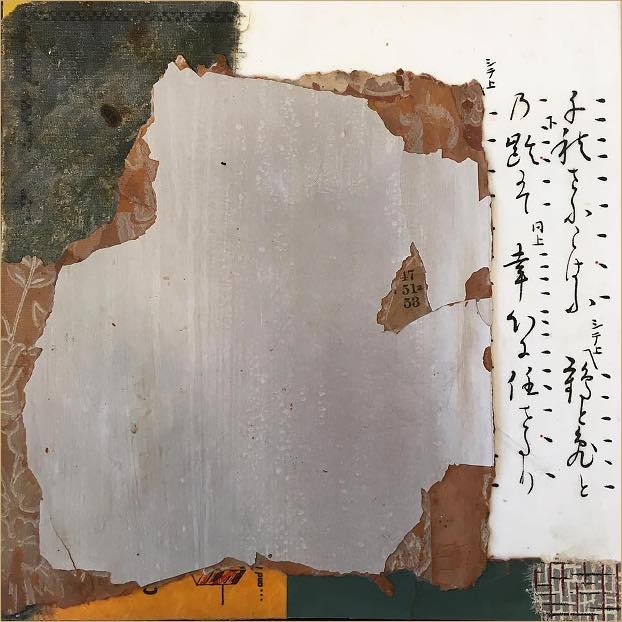
Day 18 of 40
abstract collage by C Neubauer
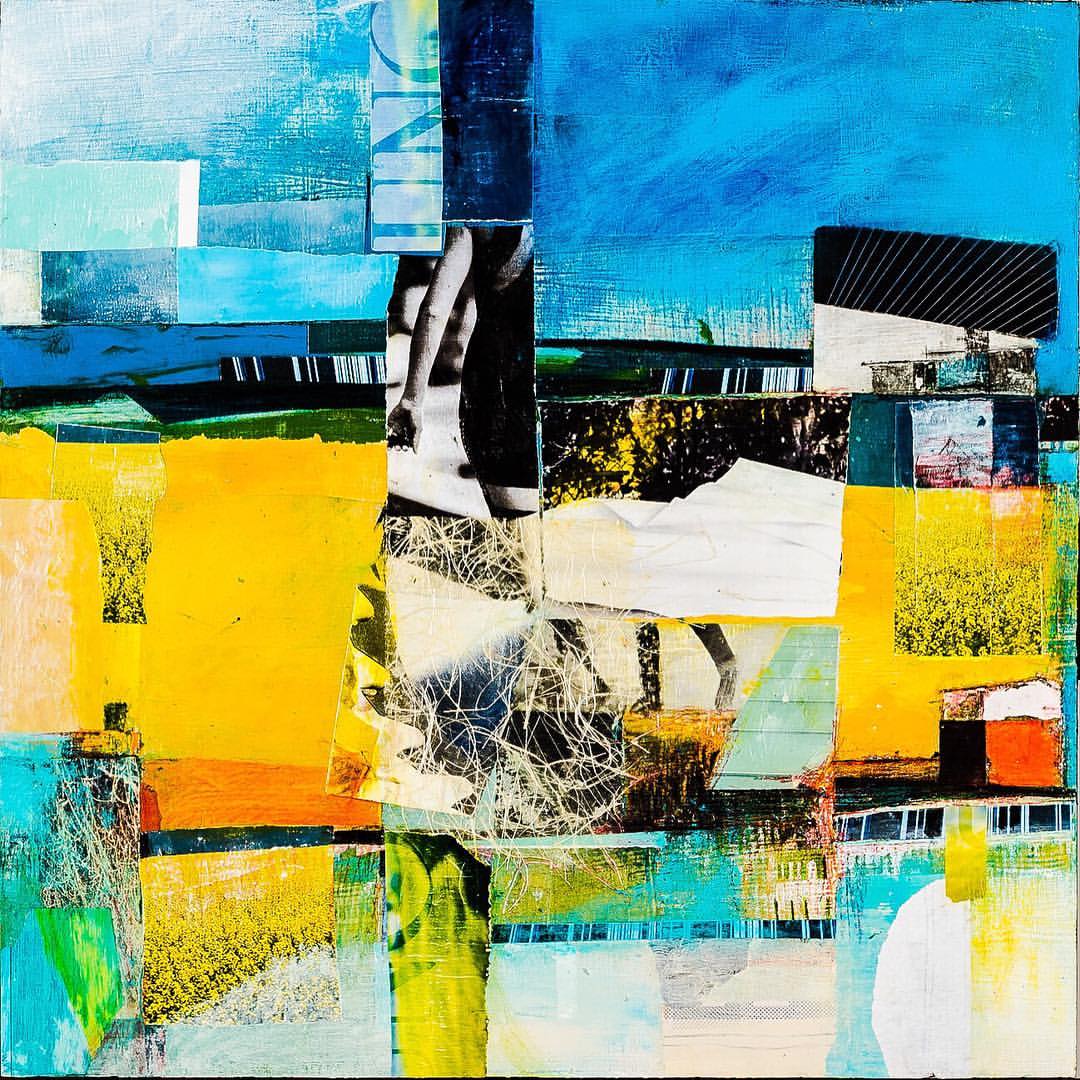
Red Cottage — from her series, SENSE OF PLACE
abstract collage by P A Turner
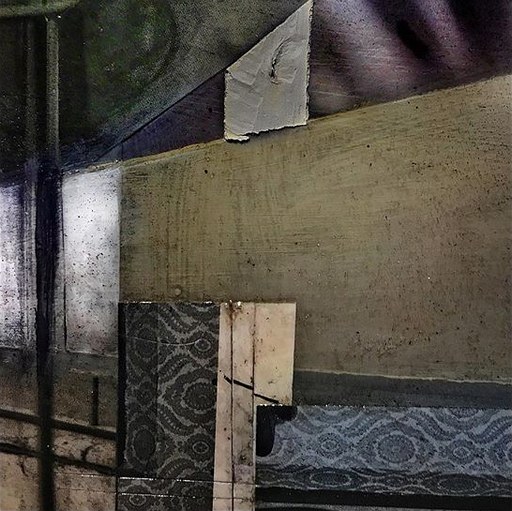
(title unknown)
abstract collage by J C Martin
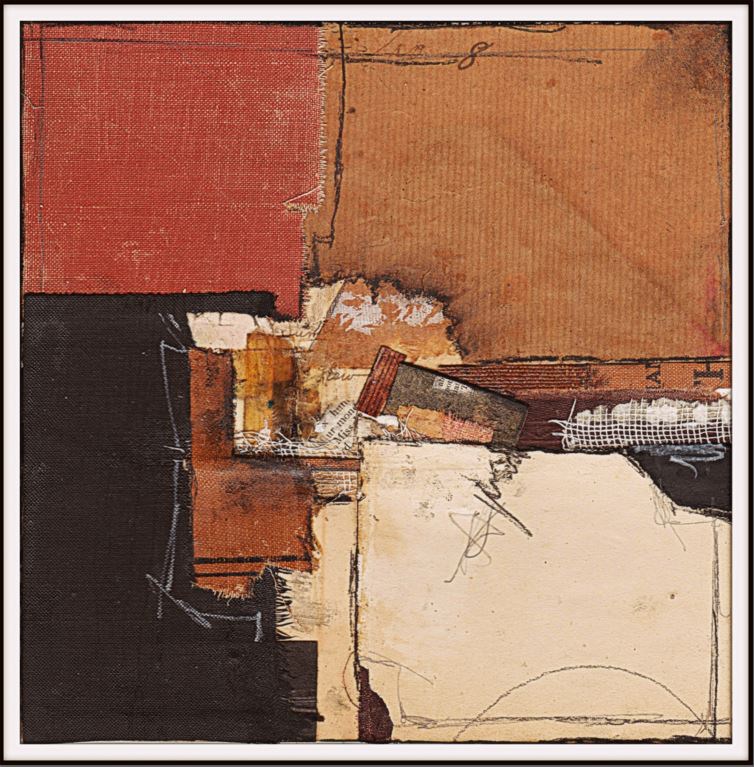
Reap
abstract collage by G Cooper
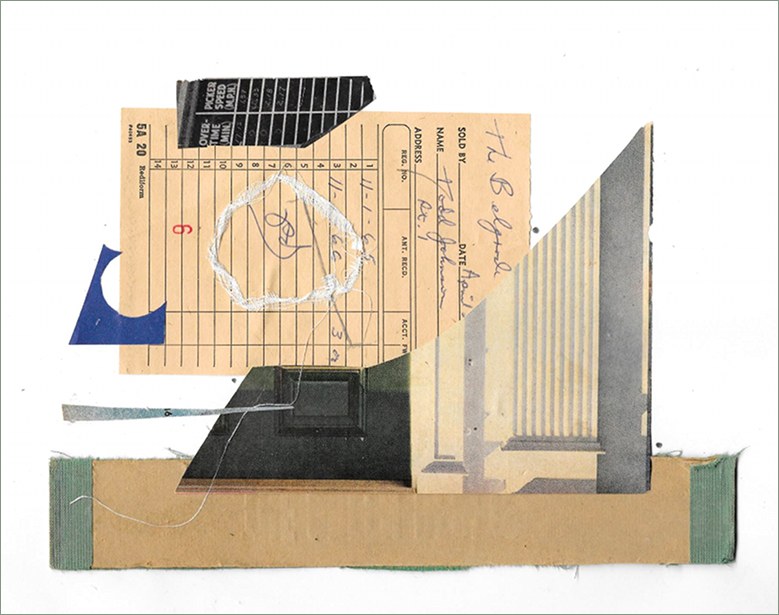
Cognitives and Conclusions
abstract collage by S Ringler
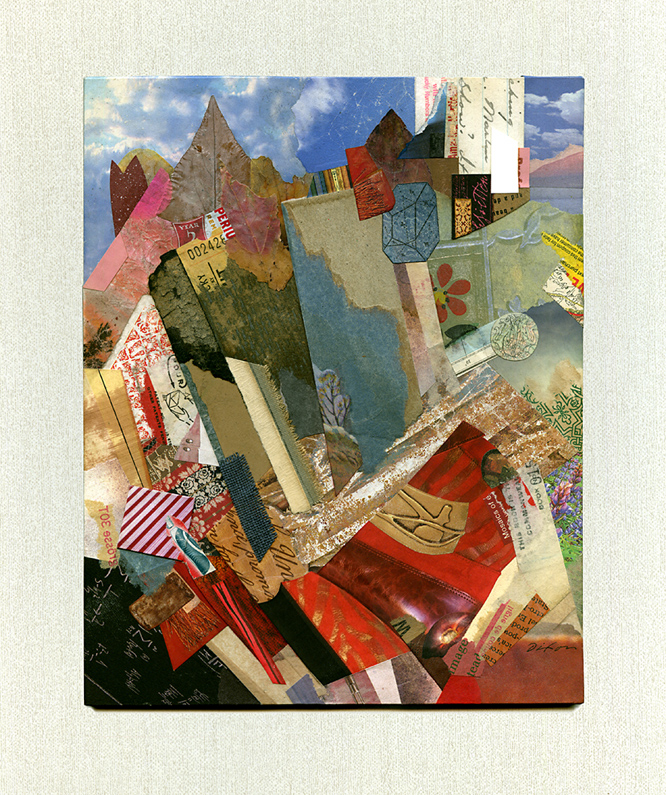
Dynamic Stability
abstract collage by J A Dixon
Purchase this artwork.
Posted in Abstraction, C Chapman, C Emeleus, C Neubauer, Collage, Cubism, D Ellington, D McKenna, Folk Art, G Cooper, Influences, J A Dixon, J C Martin, J Cornell, J Gris, K Schwitters, L Letscher, M Tidwell, Merz, P A Turner, P Picasso, S A Herman, S Kraft, S Ringler, W Strempler, Z Collins | No Comments »
Friday, August 5th, 2016
“If we adopt a surrealist viewpoint, art logically must be and naturally will tend to be surrealist, and thus be justifiable only in its ability to reveal the new, the ‘never seen,’ the parallel activity of thought and chance in consciousness.”
— Alan Gullette, 1979
You may recall, dear visitor, my June jaunt at this site into the staying power that “the surreal face” maintains in contemporary collage. I shall highlight a few more examples below. 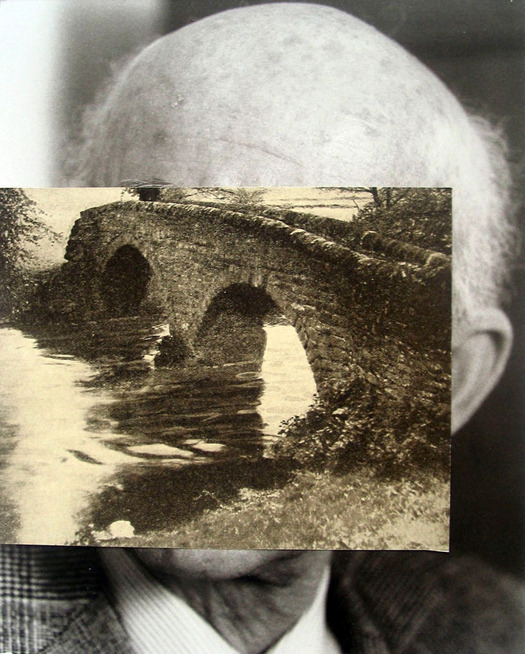 When a distinct sub-genre of the medium intrigues me, as this one clearly does, I often attempt to “diagram its visual pedigree” through the history of modern art. This is not an easy task for a non-academic (nor one, perhaps, for a scholar). A “collage geneologist” can run the risk of getting sidetracked into Man Ray or René Magritte, only to question whether use of the word “surreal” is relevant at all. Does it make more sense to trace a connection from Picasso to Tatlin to Hausmann’s 1920 homage to the Russian Constructivist and thereby leap-frog André Breton’s “psychic automatism” entirely? As much as I love the history of collage, all that delineation is beyond the scope of your humble Collage Miniaturist.
When a distinct sub-genre of the medium intrigues me, as this one clearly does, I often attempt to “diagram its visual pedigree” through the history of modern art. This is not an easy task for a non-academic (nor one, perhaps, for a scholar). A “collage geneologist” can run the risk of getting sidetracked into Man Ray or René Magritte, only to question whether use of the word “surreal” is relevant at all. Does it make more sense to trace a connection from Picasso to Tatlin to Hausmann’s 1920 homage to the Russian Constructivist and thereby leap-frog André Breton’s “psychic automatism” entirely? As much as I love the history of collage, all that delineation is beyond the scope of your humble Collage Miniaturist. 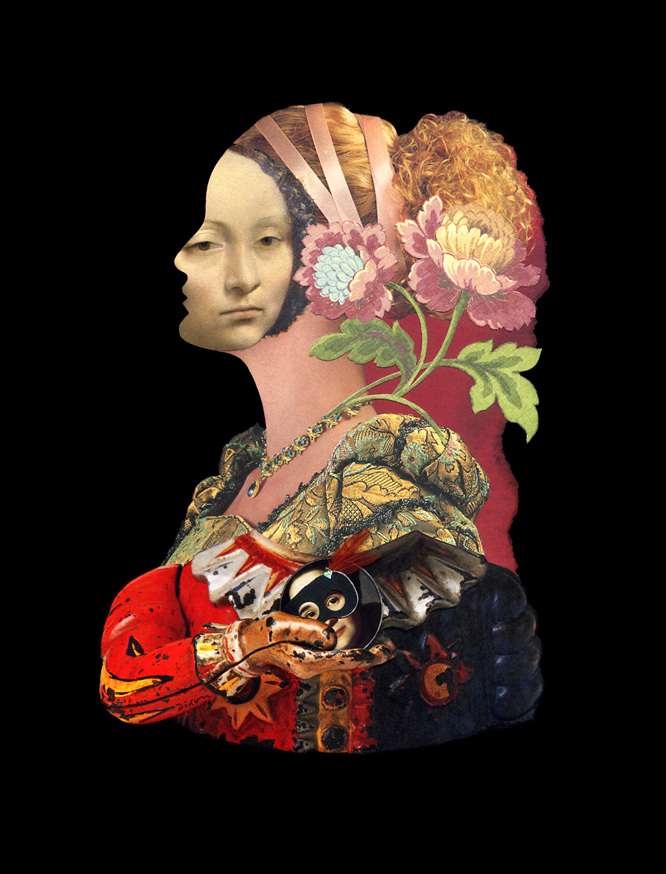
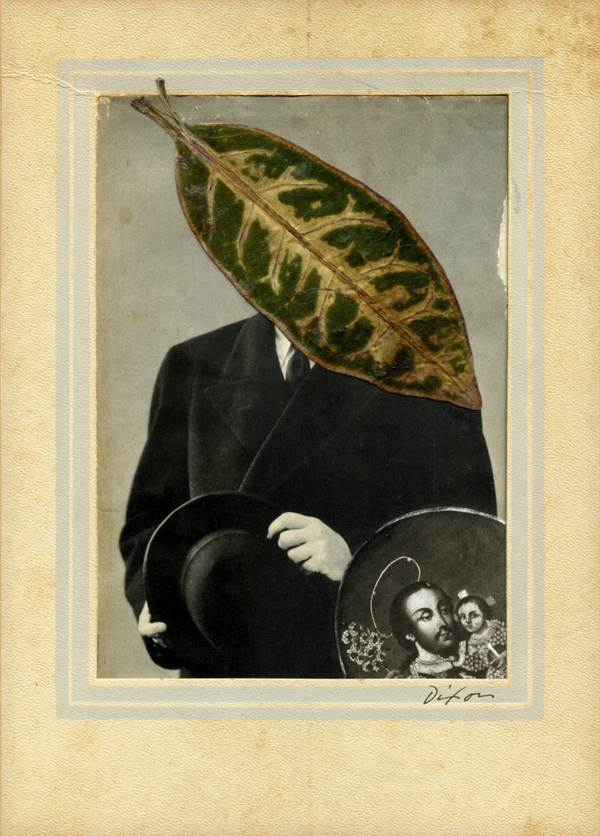 Suffice it to say that the gongs of Dada still reverberate. Ultimately, we are more concerned with a phenomenon that is alive and well among contemporary collage artists (and that long ago shed any musty trappings of Weimar Republic protest, Trotskyite dilettantism, or hostility toward religion). Even a cursory review of recent collage output exposes an enduring thread weaving its way through students, emerging professionals, veteran practitioners, and masters of the medium. Rather than muddy ourselves grubbing 20th-century roots, let us instead ask two important questions — What is the elusive essence of “the surreal face,” and why does its enduring appeal lack any sign of a downtrend?
Suffice it to say that the gongs of Dada still reverberate. Ultimately, we are more concerned with a phenomenon that is alive and well among contemporary collage artists (and that long ago shed any musty trappings of Weimar Republic protest, Trotskyite dilettantism, or hostility toward religion). Even a cursory review of recent collage output exposes an enduring thread weaving its way through students, emerging professionals, veteran practitioners, and masters of the medium. Rather than muddy ourselves grubbing 20th-century roots, let us instead ask two important questions — What is the elusive essence of “the surreal face,” and why does its enduring appeal lack any sign of a downtrend?
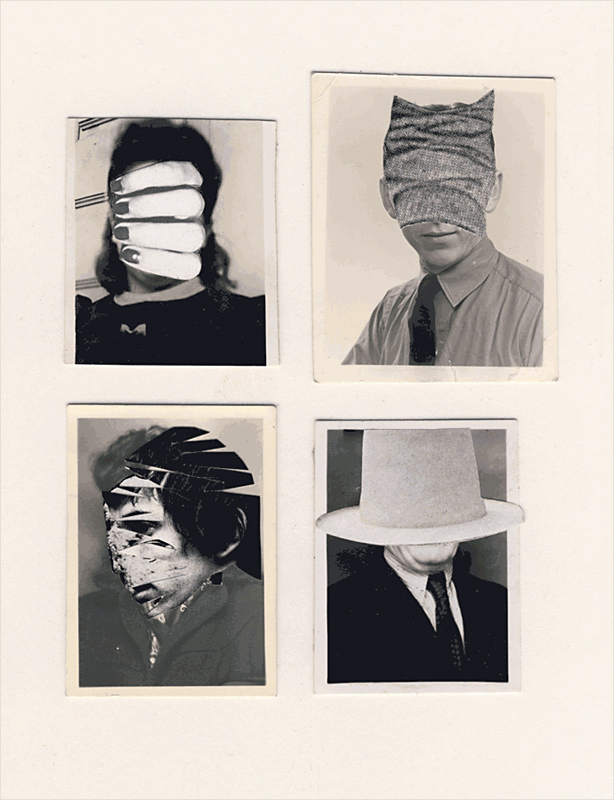
Isabel Reitemeyer
Her consummate approach convinces me that less indeed can be more.
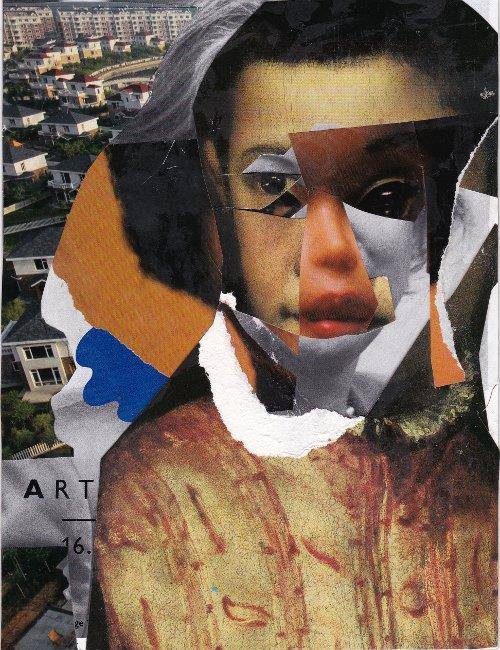
Robert Hugh Hunt
Fresh, intuitive, culturally aware. Robbo’s art springs from individuality.
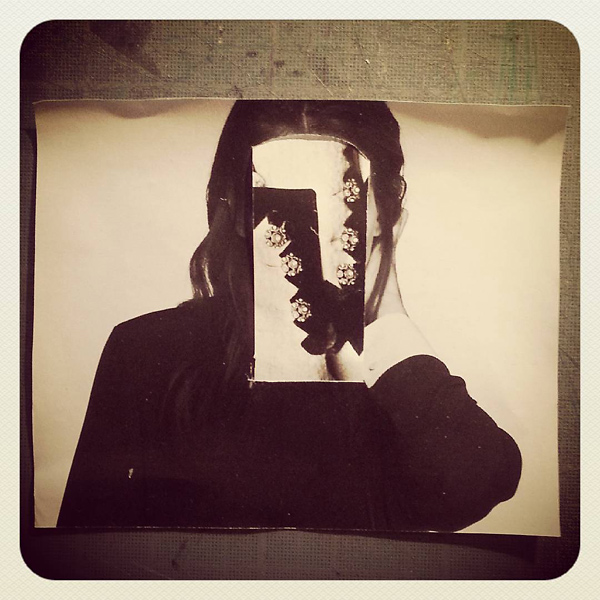
Manu Duf
There is never a timid thing about his proficient approach to collage.
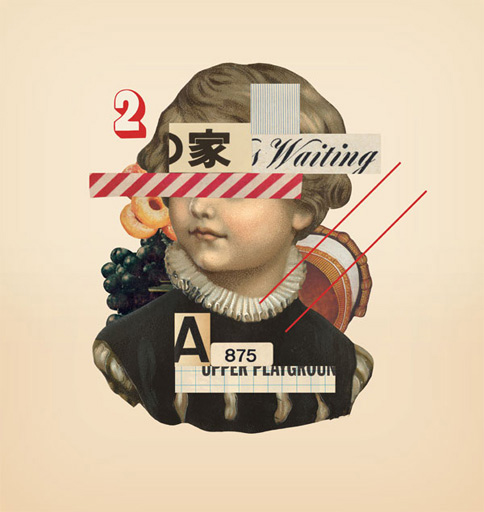
Eduardo Recife
The Brazilian illustrator sets a high standard for digital collage.
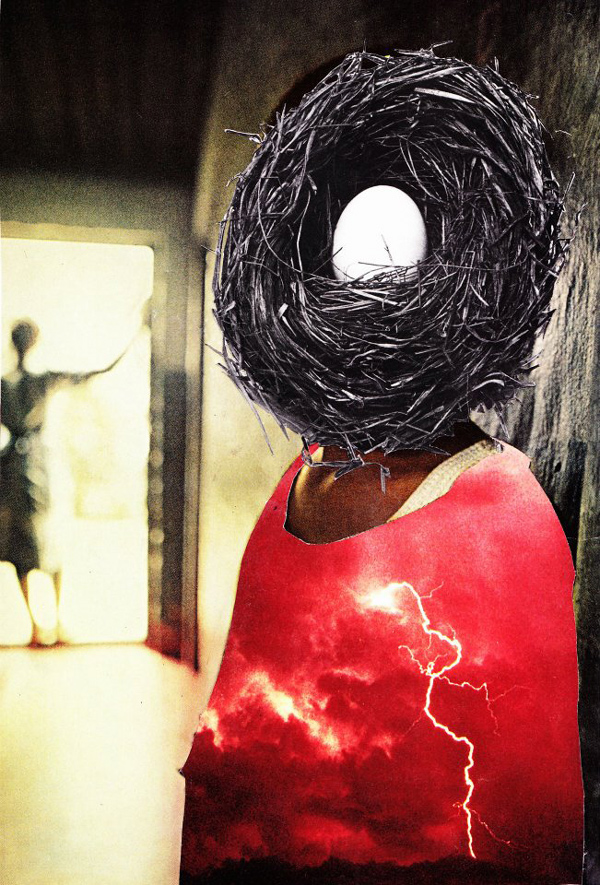
Erin Case
The Michigan-based artist is rapidly making her mark as a collage pro.
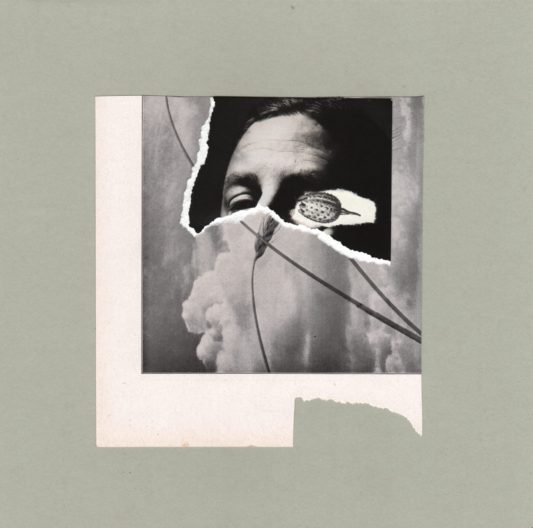
Claudia Pomowski
The versatile graphic artist is a “collage experimentalist.”
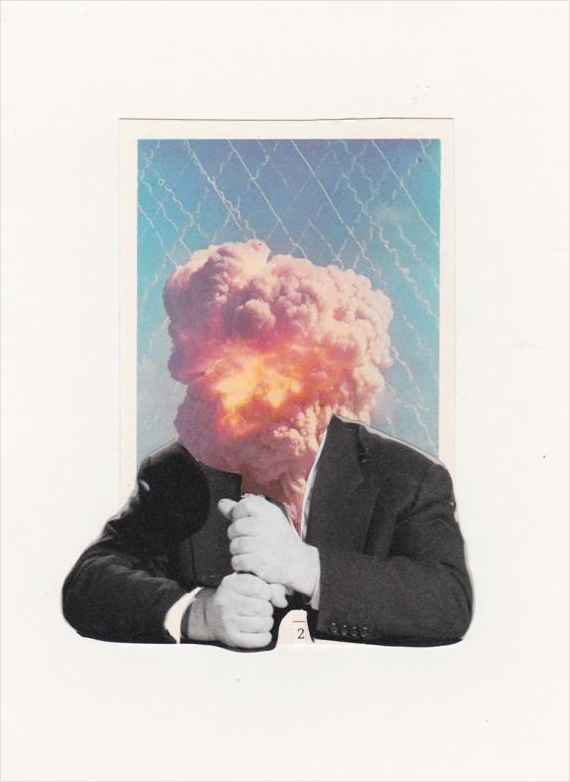
Jordana Mirski Fridman
This emerging designer/artist is “exploding” onto the medium.


Julia Lillard
The self-taught Oklahoma artist has nailed “the surreal face.”
Posted in A Breton, C Pomowski, Constructivism, Cubism, Dada, E Case, E Recife, I Reitemeyer, Illustration, Influences, J A Dixon, J Lillard, J M Fridman, J Stezaker, Links, M Duf, M Ray, P Picasso, R H Hunt, R Magritte, Surrealism, Theme/Variation | No Comments »
Monday, July 13th, 2015
“Schwitters subjected his bits of flotsam to an organizing principle resembling the vertical scaffolding of Analytic Cubism, thus transforming the diverse components into formal elements.”
— Nancy Spector
Color and composition may be the most common denominators of all visual art. Collage, by its nature, relies on a combination of separate, often disparate elements, and those two fundamentals generally play a more prominent role in the finished effect, but that does not make collage essentially a category of abstraction. A minimalist concept built on a provocative juxtaposition or image insertion can be a predominantly figurative or representational approach, even if symbolic or surreal ideas are introduced. On the other hand, collage artworks rooted in the seminal innovations of Kurt Schwitters pay primary tribute to a tradition of abstraction now more than a century old. Of course, the medium had other early pioneers, but it is difficult to imagine the trajectory that collage might have taken without his towering influence. Personally, I have no qualms about continuing to respectfully mine the rich vein of creative ore he helped to expose. Whether it proves to be a nonrenewable resource has yet to be shown.

Selective Fusion
collage on structured panel by J A Dixon
13.375 x 11.75 inches
not for sale
Posted in Collage, Combined Mediums, Cubism, Dada, Gift Art, Homage, Influences, J A Dixon, J Kolář, K De Blauwer, K Schwitters, Larger Works, Links, Maximalism/Minimalism, Merz, Methodology, Surrealism, Symbolism | No Comments »
Saturday, August 25th, 2012
I’m keen on art history to quench a dry spell. Here’s my suggestion to a collage artist in a slump.
• Browse modern art movements that have influenced collage: cubism, dada, constructivism, expressionism, surrealism, pop art.
• Relax and study the seminal masters of the medium: Cornell, Paolozzi, Höch, Hausmann, Schwitters.
• Then go to your “morgue” of images, textures, ephemera, and found material: group various ingredients into piles, responding quickly, intuitively, and without conscious thought for composition or symbolic associations.
• Before you know it, you’ll have more ideas and embryonic projects than you can immediately deal with. React first to the ones that won’t be denied. With a bit of luck, a new series will emerge.
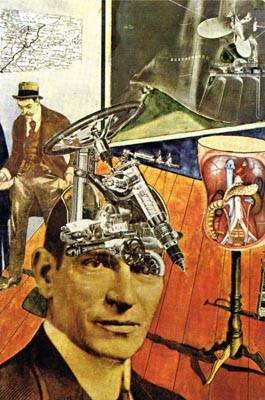
Tatlin at Home
by Raoul Hausmann
1920
Posted in Constructivism, Cubism, Dada, E Paolozzi, Expressionism, H Höch, Influences, Ingredients, J Cornell, K Schwitters, Methodology, Pop Art, R Hausmann, Surrealism | No Comments »
Saturday, July 21st, 2012
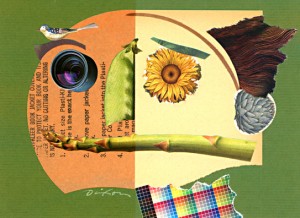
Friday, July 21, 2012
Today is as good a time as any for a public launch of this site. A hearty welcome to all. My sincere thanks to all the great folks at Xorph.com for their kind assistance.
My main purpose here, I have no problem admitting, is to showcase my work as a collage artist. That’s the selfish part. I would hope that it also becomes a point of reference for others who create or appreciate the medium. I make no claim as an authority. My only expertise is doing what I do, based on 40+ years of observation, creative investigation, and hands-on experience. And may the emphasis be on “hands.” I have nothing at all against digital collage —far from it— but this space will be devoted to the art and craftsmanship of 20th-century-mode, tear-and-glue, up-close-and-analogue collage — the 100-year-old approach that results in a singular, physical artifact.
If you happen to like this spot, please pay a return visit frequently, and let me know what you think. Visual art is a collaborative activity, no matter what some may say. I’ll expound more on that at another time. Begin today with a long paragraph that serves as my “statement.”
After a full century, people may continue to debate whether collage as a technique was “invented” by Georges Braque or Pablo Picasso, but in my considered view, the seminal genius of the medium was Kurt Schwitters, perhaps the first modern artist to fully master the process. I hold the opinion that relatively few aesthetic traditions emerged from early-20th-century collage experiments without the inherent sensibilities of Dada or Surrealism, and I find it endlessly fascinating to probe toward the heart of creative spontaneity while unraveling the ever-present contrasts of beauty versus non-beauty, optimism versus pessimism, and art versus anti-art. In addition to being intrigued by such mindful intuition, I remain awestruck by the capacity to create extrinsic value from everyday material that has virtually no intrinsic worth. By aesthetic sensitivity and creative ingenuity, anything that has been discarded can be infused with meaning or be brought into a contributory connection with our daily awareness. Thus, the core relationship between found material and the art of collage transmits a unifying principle. When the remnants of ordinary living are physically re-purposed to inevitably resolve their unique compositional harmony, the underlying link between visual form and symbolic communication is revealed. When the literal characteristics of the ingredient elements are successfully transcended, a culminating artifact offers the potential for a shared experience with each participating observer. I am convinced that the resulting totality of emotional impressions and layered associations derive more from a deeper artistic intent than from conscious decision making. As in most improvisational activity, there is ample opportunity for surprise, amusement, mystery, intrigue, discovery, and joy.
Posted in Collage, Cubism, Dada, G Braque, Influences, J A Dixon, J Cornell, K Schwitters, Methodology, P Picasso, Surrealism, Symbolism | No Comments »
 The honor came as a surprise, since I don’t consider myself a practitioner or student of still life as an art form. I have, however, looked deeply at artwork made by Sheldon and those who are. The arms-length quality of modern still life has compelled my close scrutiny for many years. Given that influence, I brought to the genre what I’ve discovered by “painting in papers” from direct observation (the long sweep of art history hovering somewhere outside my conscious awareness, with its rich tradition of artists tackling visual cornacopias of objects and edible fare). I decided to interpret a tabletop group of objects from raw material, rather than assemble a conventional collage composition from found images.
The honor came as a surprise, since I don’t consider myself a practitioner or student of still life as an art form. I have, however, looked deeply at artwork made by Sheldon and those who are. The arms-length quality of modern still life has compelled my close scrutiny for many years. Given that influence, I brought to the genre what I’ve discovered by “painting in papers” from direct observation (the long sweep of art history hovering somewhere outside my conscious awareness, with its rich tradition of artists tackling visual cornacopias of objects and edible fare). I decided to interpret a tabletop group of objects from raw material, rather than assemble a conventional collage composition from found images.






































